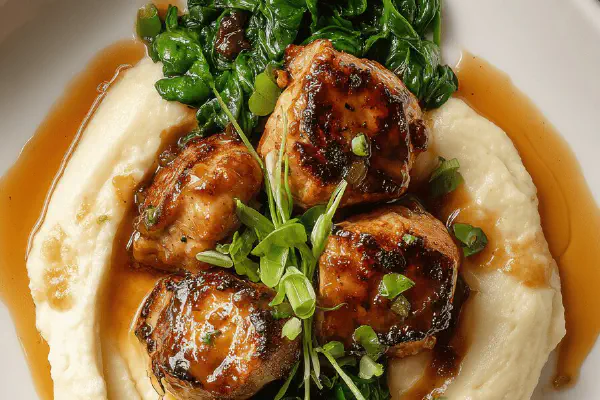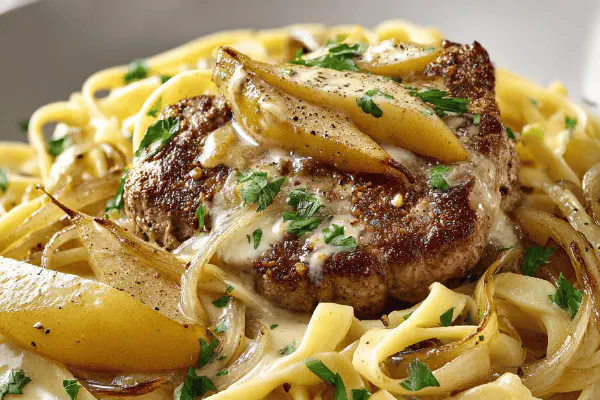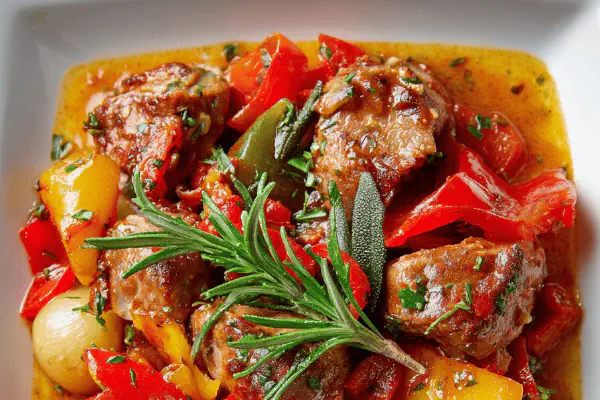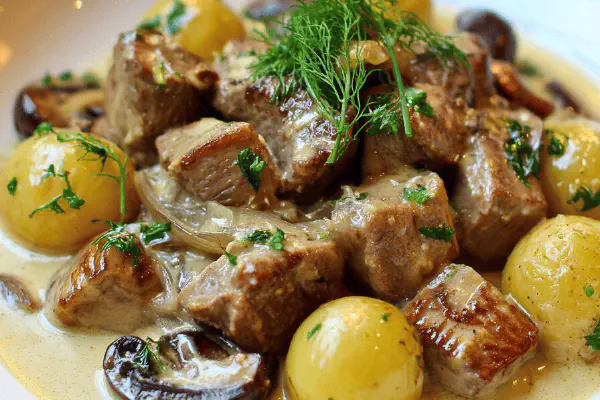Veal Sweetbread Five-Spice

By Emma
Certified Culinary Professional
Ingredients
- 750 g veal sweetbreads
- 70 g unbleached all-purpose flour
- 85 g duck fat or unsalted butter
- 1 French shallot finely chopped
- 2 garlic cloves minced
- 15 ml star anise powder
- 15 ml honey
- 5 ml white wine vinegar
- 250 ml muscat wine
About the ingredients
Method
- Drop veal sweetbreads into simmering salted water. Poach 4-6 minutes only; texture matters. Plunge into ice water immediately. Drain thoroughly.
- Peel away tough skins, veins, and visible fat. Use fingers, gentle pressure. Cut into thin slices or bite-size bits; uniform for even cooking.
- Spread flour on plate. Coat sweetbreads coating lightly but thoroughly. Shake off excess, don’t cake up flour.
- Heat half duck fat in skillet over medium. Sear half sweetbreads without crowding—shake pan, hear that sizzle? Brown until crust forms, 2-3 min per side. Season with salt and pepper. Transfer to warm plate. Repeat with remaining fat and sweetbreads.
- In same skillet, lower heat to medium-low. Add shallot, garlic, star anise powder. Stir, let soften and release aroma, about 2 min. Drizzle honey; wait for gentle bubbling, sugar caramelizes slowly, flush edges darken slightly. Stir constantly.
- Splash vinegar, scrape up browned bits—flavor minefield here. Pour muscat wine; raise heat; reduce until sauce thickens to syrup consistency—about 8-10 min. Shoulder sauce to coat every piece well.
- Return sweetbreads to pan; toss gently, warm through 2 min. Taste—adjust salt, pepper, add splash more vinegar if sharpness lost.
- Plate immediately; serve with celery root purée and sautéed spinach or wilted greens to cut richness.
Cooking tips
Chef's notes
- 💡 Poaching sweetbreads short time. 4-6 minutes. Texture changes fast. Too long means rubbery, too short not cooked. Ice bath right after; stops heat dead. Peel membranes wet fingers; stubborn bits need soak or extra blanch. No shortcuts here. Patience.
- 💡 Flour dusting must be light. Shake off excess flour carefully. Too thick clumps mean soggy crust. Coat every piece but don't cake up. Sear only half batch at a time; crowd pan kills heat, more steam, less crust. Duck fat behavior - sizzle signals Maillard, good browning. Butter burns faster. Adjust heat as you go.
- 💡 Aromatics low heat. Shallot, garlic, star anise powder. Stir slowly fragrance releases, don’t rush. Drizzle honey off heat at first, then gentle bubbling. Watch edges darken slightly, caramelization happens slow. Burnt honey bitter. Stir constantly or scorch risk rises fast here.
- 💡 Deglaze with vinegar splash; scrapes up fond stuck bits - flavor jackpot if you lift properly. Muscat wine next; raise heat, reduce patiently. Syrupy stage key. Sauce clings but stays glossy. Too thin is watery, too thick sticky. Keep eye, texture is proof. Toss gently sweetbreads to keep crust intact.
- 💡 Milk replacements? Duck fat optional but ups savoriness—better sizzle. Butter if used watch brown fast. Star anise powder for five-spice; simpler, cleaner. Honey adds gentle caramel, maple syrup gives woody rustic vibe but won't brown same. Vinegar white wine, apple cider fine alternatives. Muscat sweetness unique but dry white Riesling also good substitute.
Common questions
How long to poach sweetbreads?
4-6 minutes max. Texture flips fast if overdone. Ice bath stops cooking instantly. No skipping this step means cleaner peeling and better texture. Longer poach ruins softness.
Can I use five-spice powder instead?
You can but expect stronger bitter notes. Star anise powder simpler flavor. Five-spice has cinnamon, cloves, fennel that may clash with honey sweetness. Adjust honey or omit if using five-spice.
Why is coating flour important?
Flour creates crust on sear, locks moisture in. If coated too thick or clumped, crust soggy, breaks apart. Shake off loose flour; light even layer ideal. Improves texture, mouthfeel. Sear temperature matters too.
How to store leftovers?
Refrigerate airtight container only. Reheat gentle pan heat best; microwave or oven dries crust fast. Sauce thickens cold, loosen with splash water or wine on reheat. Eat within 2-3 days for best texture.



